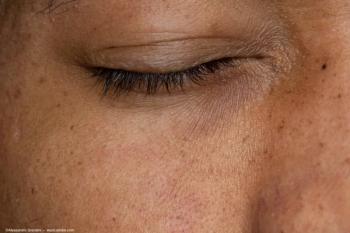
The ophthalmic pharmaceutical pipeline expands
The use of hormonal therapies may represent the next generation of medication for the tear film deficiencies of dry eye.
Dry eye
Cyclosporine 0.05% ophthalmic emulsion (Restasis, Allergan) remains the only prescription medication available for the treatment of severe, chronic dry eye, and its user base continues to increase. Additional prescription eye drops for dry eye, including diquafosol tetrasodium (Prolacria, Inspire Pharmaceuticals), ecabet sodium (ISTA Pharmaceuticals), rebamipide (Novartis), and pimecrolimus (Novartis), continue to move through the pipeline.
In February, ISTA Pharmaceuticals announced preliminary results from a phase II trial evaluating two concentrations of ecabet sodium (3% and 3.9%) in 162 patients with dry eye. The study revealed a trend in efficacy with the 3% solution, as measured by mean corneal staining and blink rate parameters and several subjective symptom ratings. According to ISTA's Web site, the company is in the planning stage for a confirmatory study and two future phase III studies.3
Other products in the pipeline include rebamipide, pimecrolimus, and a sodium hyaluronate-based eye drop (Moli 1901, Lantibio & TRB Chemedica). Rebamipide, which was originally developed to treat gastric ulcers, is now in phase III trials for dry eye treatment, and pimecrolimus is progressing into phase II trials to evaluate the efficacy and safety of the eye drop at two concentrations (0.3% and 1.0%).4 Moli 1901, for which the phase I studies were completed in Europe, is undergoing phase II clinical trials in the United States.5
Novagali Pharma is developing two separate dry eye treatments using their novel cationic emulsion platform, Novasorb, which is designed to improve penetration of ocular tissues. One is a cationic emulsion formulation of cyclosporine (Nova 22007, Novagali), which has been shown to be safe in phase II trials and is now in phase III trials for efficacy.6 They are also preparing the European and U.S. registration of Cationorm (Nova23006/33). The results of a phase II study for Cationorm, reported at the ARVO meeting this year, indicate that the Cationorm eye drops are well tolerated and, following 1 month of treatment, there was a trend toward improvement of Schirmer's scores, tear film breakup time (TFBUT), and staining scores.7
The use of hormonal therapies for dry eye may represent the next generation of medication for the tear film deficiencies of dry eye. One study analyzed the records of 23 female patients, fifteen of whom wore contact lenses, who applied testosterone cream to the eyelids twice a day for at least 3 years. Researchers found significant changes in several dry eye parameters, including Schirmer's scores, contact lens wear time, and an increase in TFBUT from 4.1 seconds at baseline to 6.1 seconds, without any increase in IOP.8
Another hormonal dry eye therapy in development is iDestrin (Nascent Pharmaceuticals), a topical estrogen ester compound intended for use in post-menopausal women. The company announced the results of a phase II study in January. In a comparison with vehicle in subjects with moderate to severe dry eye, significant improvements in Schirmer's scores were evident after 8 and 12 weeks of twice-daily dosing.9
Newsletter
Don’t miss out—get Ophthalmology Times updates on the latest clinical advancements and expert interviews, straight to your inbox.


















































.png)


